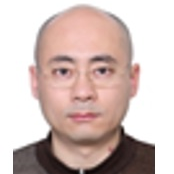Advances in Energy Storage and Conversion Composites
A special issue of Materials (ISSN 1996-1944). This special issue belongs to the section "Energy Materials".
Deadline for manuscript submissions: closed (15 December 2021) | Viewed by 1870
Special Issue Editors
Interests: energy storage and transform; microwave absorption
Special Issue Information
Dear Colleagues,
The last two decades have witnessed a significant improvement in energy storage devices, enabling the utilization of various types of energy. Today, the storage and conversion of energy regarding portable electronic devices need improvements in components and microstructures of materials. The development of nanotechnology with the latest characterization facilities has led to the revolution of these materials. The emergence of electrochemical energy storage and conversion is regarded as one of the most promising methods of storing and transforming energy, which needs systematic strategies to reach maximum efficiencies.
This Special Issue will compile recent developments in the field of energy storage and conversion devices. The articles presented in this Special Issue will cover various topics including, but not limited to, the optimization of the preparations, and the functionalization and the characterization of various electrochemical devices, including batteries, electrolyte, supercapacitors, fuel cells, renewable energy, and portable electronic devices. Topics are open to carbon-based materials, MOFs, MXene, and other kinds of materials for the development of applications.
Prof. Hua Li
Dr. Wang Kaifeng
Guest Editors
Manuscript Submission Information
Manuscripts should be submitted online at www.mdpi.com by registering and logging in to this website. Once you are registered, click here to go to the submission form. Manuscripts can be submitted until the deadline. All submissions that pass pre-check are peer-reviewed. Accepted papers will be published continuously in the journal (as soon as accepted) and will be listed together on the special issue website. Research articles, review articles as well as short communications are invited. For planned papers, a title and short abstract (about 100 words) can be sent to the Editorial Office for announcement on this website.
Submitted manuscripts should not have been published previously, nor be under consideration for publication elsewhere (except conference proceedings papers). All manuscripts are thoroughly refereed through a single-blind peer-review process. A guide for authors and other relevant information for submission of manuscripts is available on the Instructions for Authors page. Materials is an international peer-reviewed open access semimonthly journal published by MDPI.
Please visit the Instructions for Authors page before submitting a manuscript. The Article Processing Charge (APC) for publication in this open access journal is 2600 CHF (Swiss Francs). Submitted papers should be well formatted and use good English. Authors may use MDPI's English editing service prior to publication or during author revisions.
Keywords
- batteries
- supercapacitors
- electrolyte
- fuel cells
- renewable energy
- portable electronic devices







